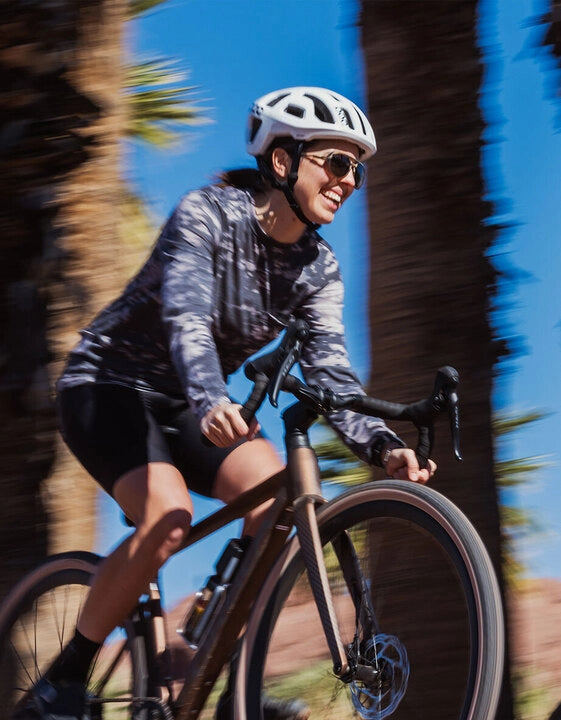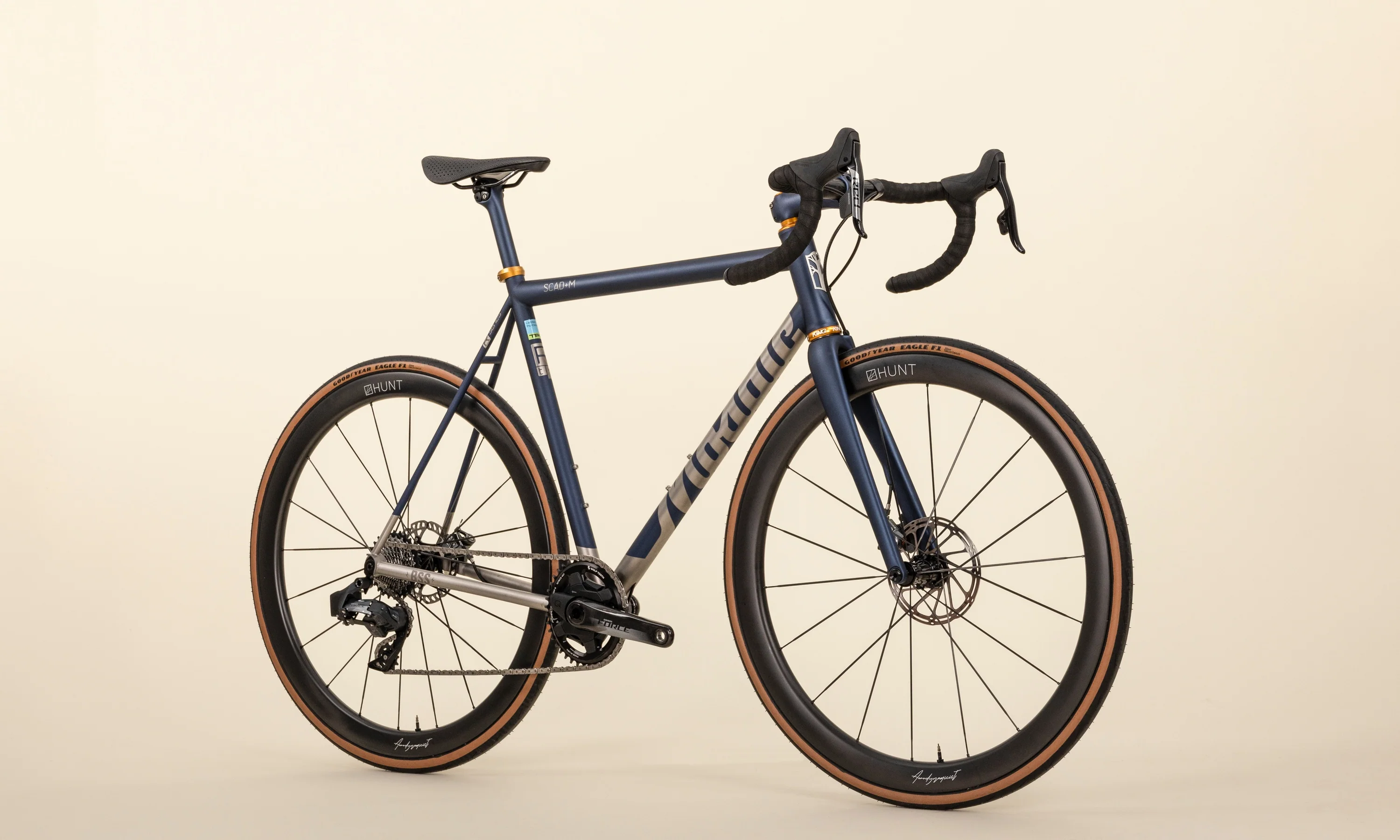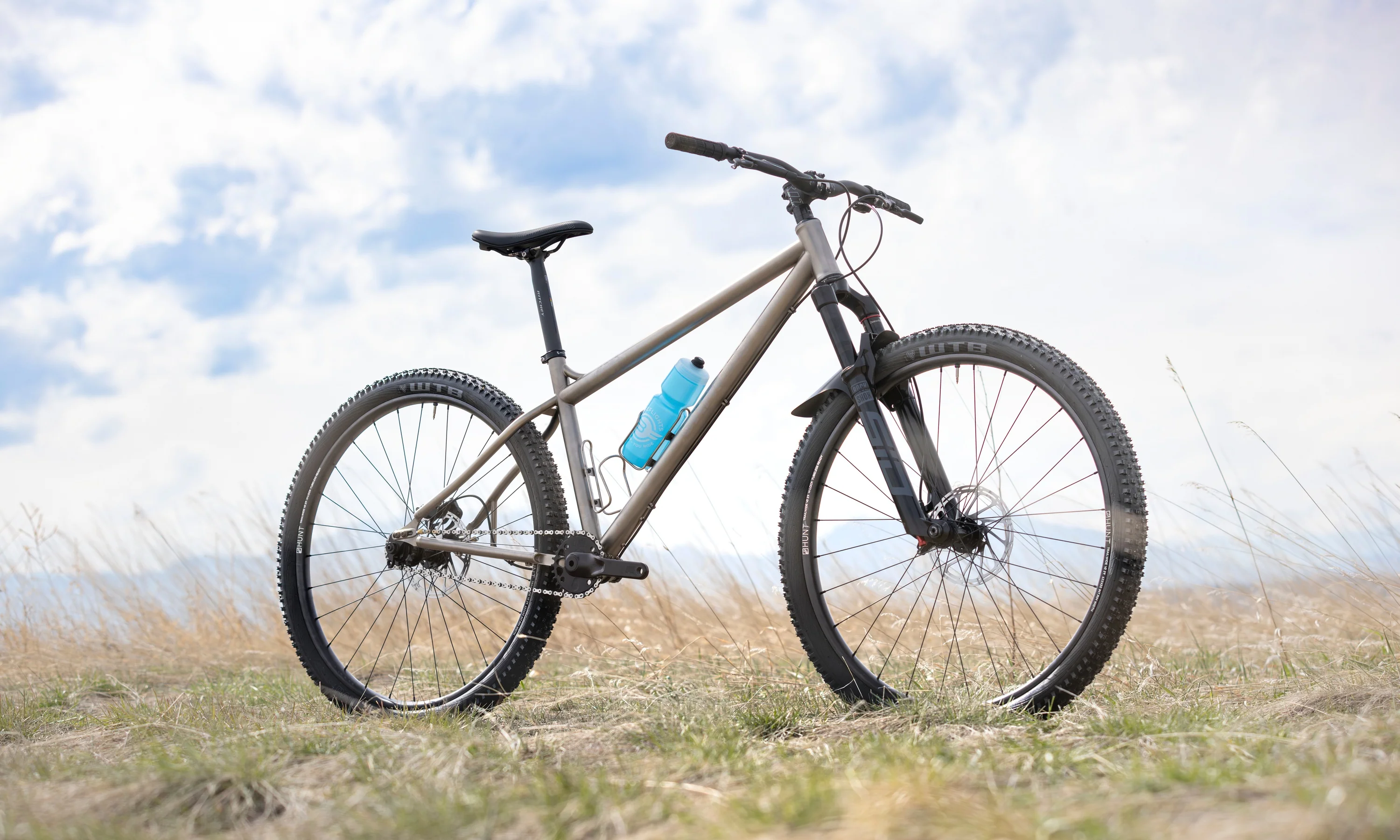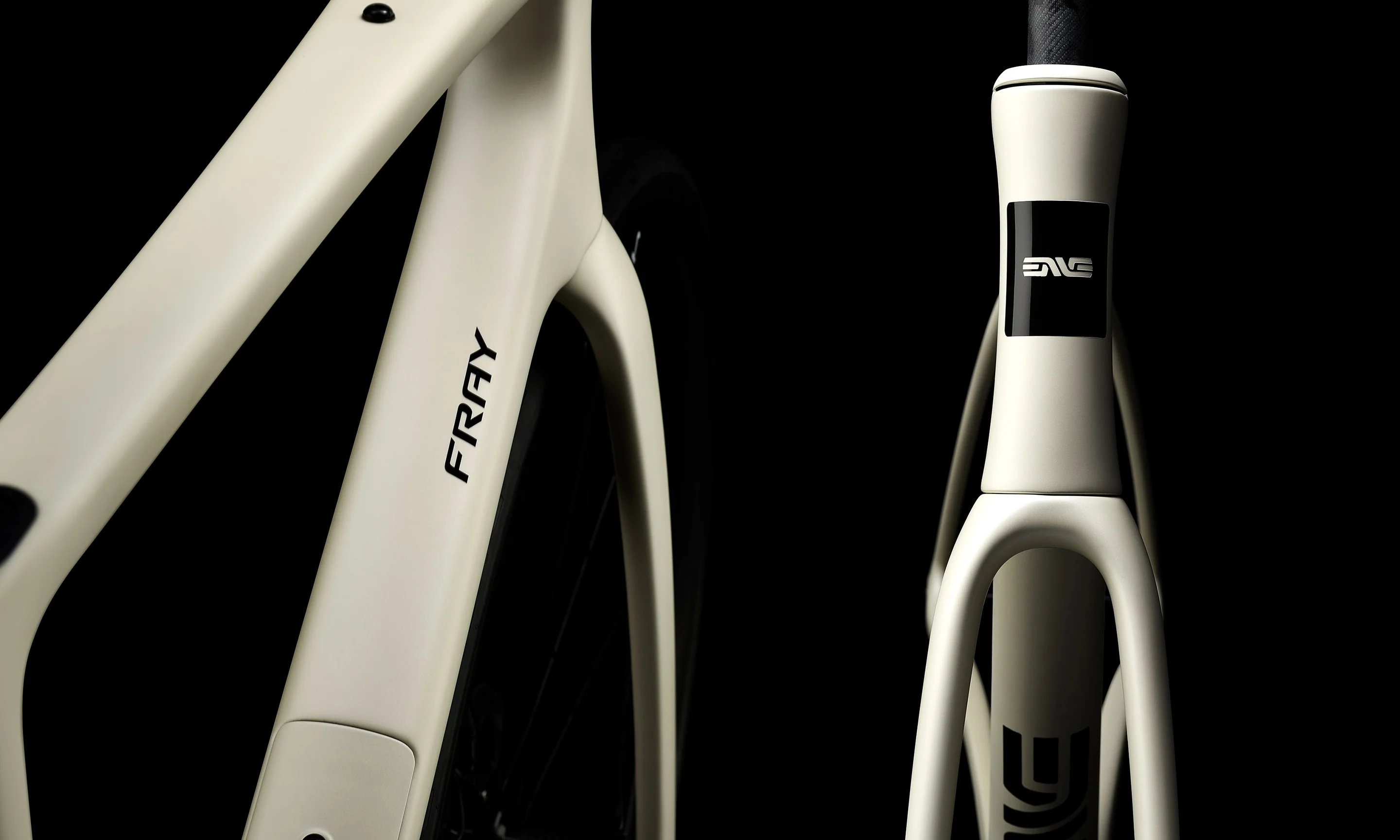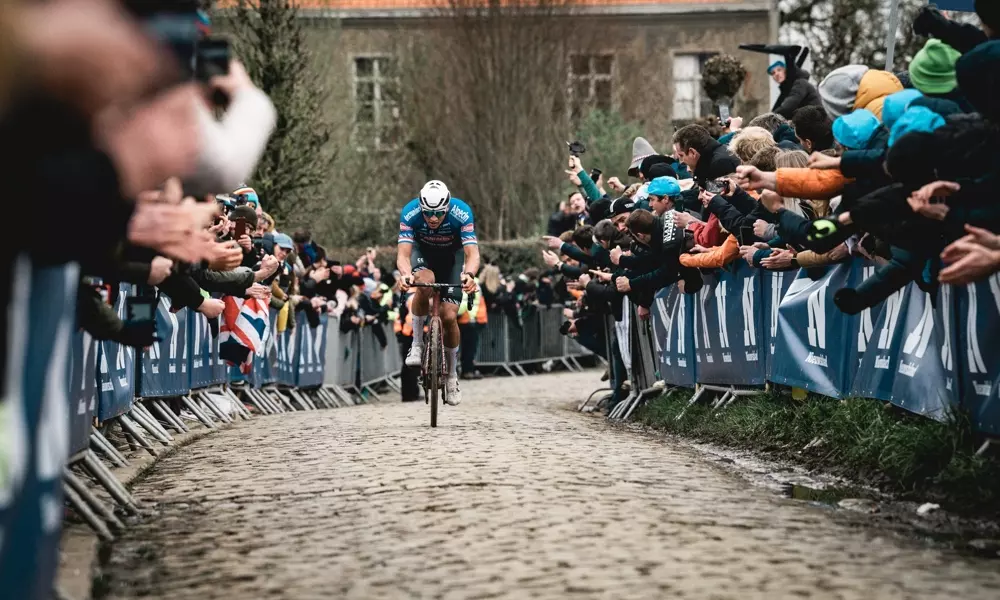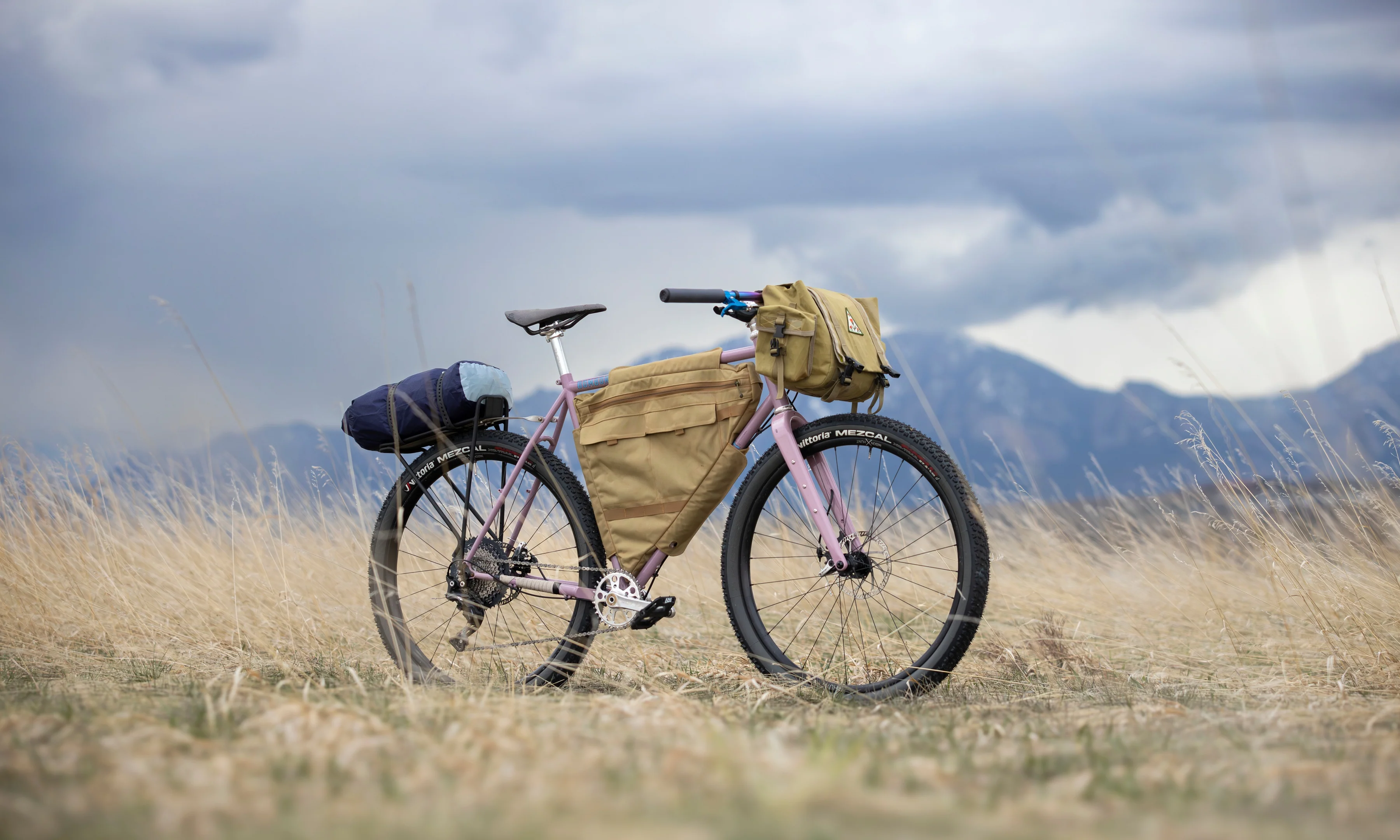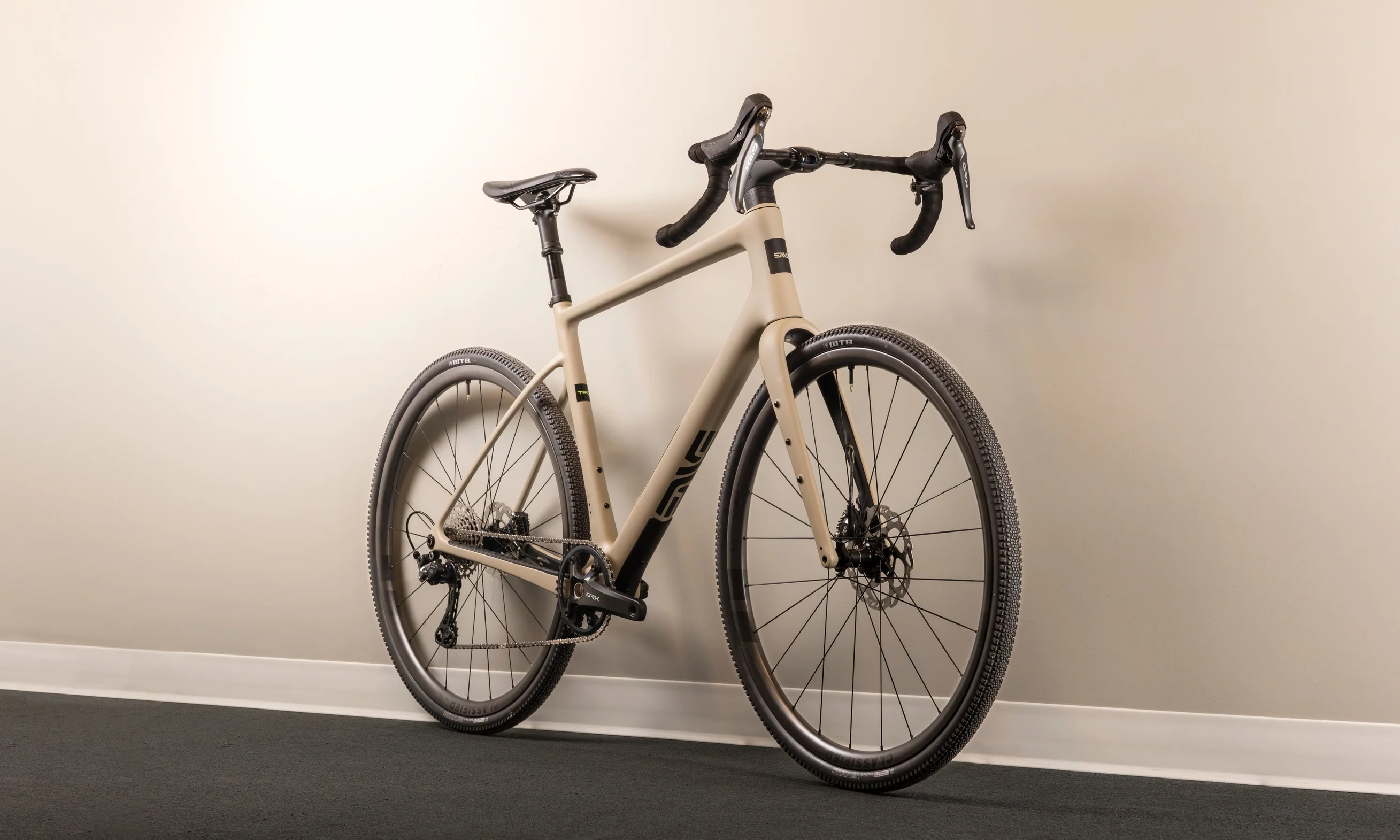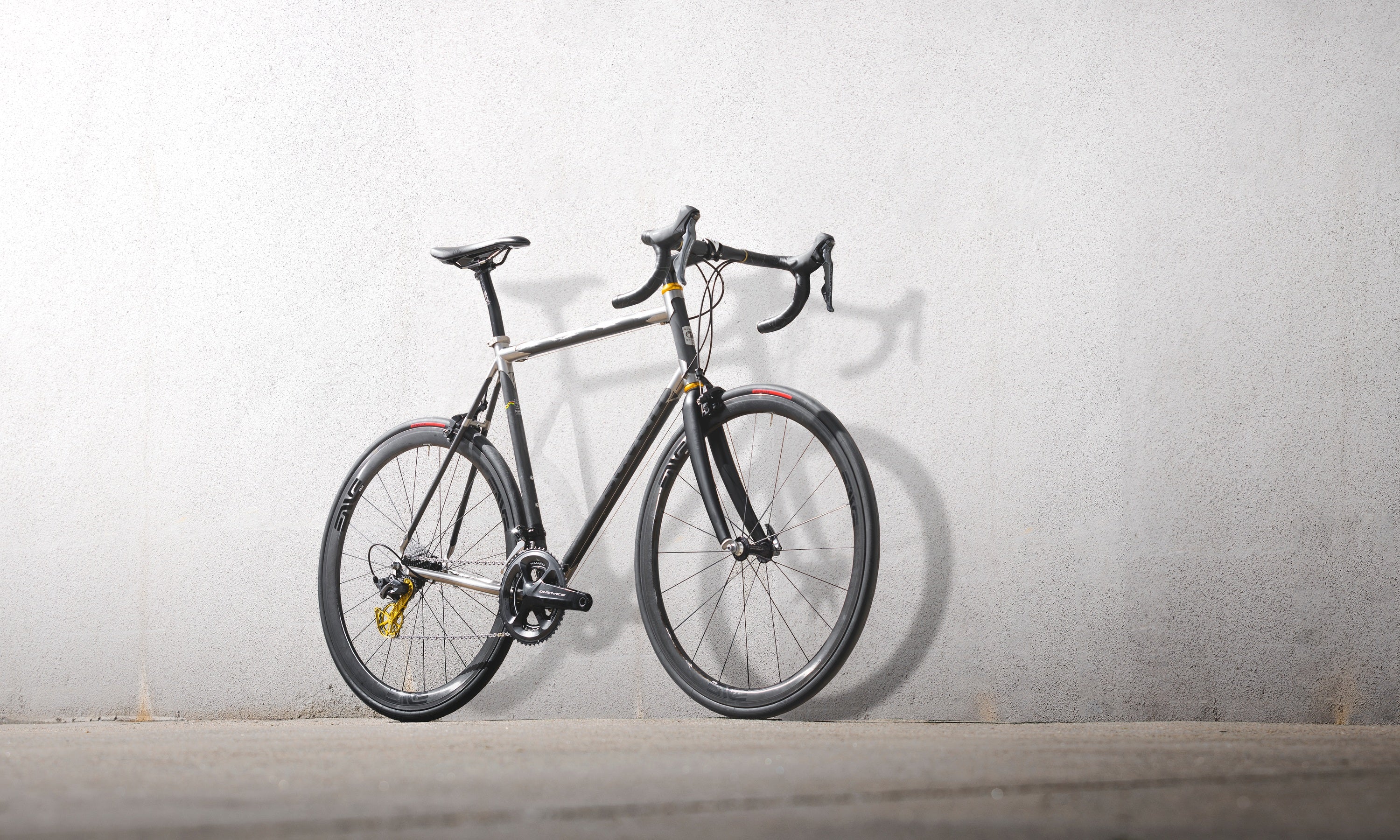I love riding gravel, but my hands don't. Let me explain. Over the years, I’ve accumulated multiple finger, wrist, and tendon injuries. Now, when I hit the rough stuff on my gravel bike, the first thing to fail is always my hands. After a 50-60 mile ride, they’ll be sore, tingly, or numb. During long-distance events like Unbound Gravel and SBT GRVL, the pain can be unbearable.
I’ve managed to keep my hands somewhat happy with professional bike fits, cushy bar tape, and high-volume tires. But this year, I decided to attack the problem by buying an entirely new bike. Enter the Lauf Seigla. With its Grit SL suspension fork, it promises to be one of the most comfortable gravel bikes ever. But does it deliver? I’ll explain why I bought a Seigla and whether it’s the solution my hands have been hoping for.
[button]SHOP ALL GRAVEL BIKES[/button]
The Lauf Grit 3rd Gen fork
 When I began shopping for a new gravel bike, the main thing I wanted was some form of front suspension. I considered purchasing a bike equipped with a RockShox Rudy or Fox 32 Taper-Cast, but at over 1,200 grams, these forks weigh significantly more than a rigid carbon fork. With weight on my mind, the Lauf Seigla, with its funky-looking Lauf Grit SL, quickly rose to the top of my list.
When I began shopping for a new gravel bike, the main thing I wanted was some form of front suspension. I considered purchasing a bike equipped with a RockShox Rudy or Fox 32 Taper-Cast, but at over 1,200 grams, these forks weigh significantly more than a rigid carbon fork. With weight on my mind, the Lauf Seigla, with its funky-looking Lauf Grit SL, quickly rose to the top of my list.
Our Senior Editor, Spencer Powlison, already wrote a great review on the Grit fork, so I’ll just give you the basics. The Grit is made of carbon fiber and it provides 30mm of travel using “S2 glassfiber” leaf springs. Unlike a traditional air fork, there are no seals, dampers, or internals to worry about, so the Grit is super light and completely maintenance-free. It weighs 400 grams less than the Rudy and 32 Taper-Cast. The latest 3rd Gen version has more tire clearance than the previous Grit SL (more on that in a moment).
You may be wondering if I considered other options like suspension stems or the Specialized Diverge, which uses a Future Shock system to provide 20mm of travel under the handlebars. I didn’t. I’ve tried out the Cane Creek eeSilk stem and my wife rides a Diverge, so I know they’re effective. But conceptually, I don’t like the idea of my cockpit moving and prefer suspension forks.
[newsletter]
The Lauf Seigla
 I purchased a small Lauf Seigla (I'm 5'8) with the “Race Wireless” build. For $5,580, you get a carbon frame, the Grit SL fork, a full SRAM Force AXS XPLR drivetrain, a Quarq power meter, e*thirteen XCX Race carbon wheels, Lauf’s Smoothie carbon handlebars, and an FSA SL-K carbon seatpost. To me, that’s a smoking deal. There are a few key reasons I chose to buy the Seigla rather than simply buying a Grit SL fork and adding it to my old bike.
I purchased a small Lauf Seigla (I'm 5'8) with the “Race Wireless” build. For $5,580, you get a carbon frame, the Grit SL fork, a full SRAM Force AXS XPLR drivetrain, a Quarq power meter, e*thirteen XCX Race carbon wheels, Lauf’s Smoothie carbon handlebars, and an FSA SL-K carbon seatpost. To me, that’s a smoking deal. There are a few key reasons I chose to buy the Seigla rather than simply buying a Grit SL fork and adding it to my old bike.
Tire clearance
Other than the fork, a major draw of the Seigla is tire clearance. It can fit up to 700c x 57mm or 29 x 2.25” tires. Tires have a massive effect on your comfort. Bigger tires mean more air volume and lower pressures, which directly translates into better vibration and impact damping.

The driveside chainstay uses a 6mm thick plate of solid carbon for extra tire clearance.
Lauf achieved the Seigla’s impressive tire clearance by using a super narrow, but super tough, solid carbon section on the driveside chain stay (the same method Specialized used to clear 47mm wide tires on the latest Diverge). Because of the big tire clearance, the Seigla is only compatible with 1x drivetrains (fine by me!), and it requires a MTB-style 73mm wide bottom bracket. SRAM has provided special DUB WIDE crank spindles to fit the bottom bracket, so the Q-factor is also 5mm wider than normal (which I’m also fine with).
Rear-end compliance
My hands are my weak point, but I care about cushioning my backside too. Lauf claims that the Seigla has three times more rear compliance than its previous flagship gravel bike, the True Grit. This is thanks to Lauf’s ICE, or Integrated Compliance Engineering concept. The key elements are a top tube that gets thinner toward the rear, skinny, dropped seat stays, and the straight chain stays. Together, they’re designed to allow the rear axle to flex around a virtual pivot point at the top tube / seat tube junction. This means the rear end can match the comfort provided by the Grit SL fork at the front.
Progressive geometry
The Seigla uses Lauf’s “Long 4 Speed” geometry. If you’re familiar with how mountain bike geometry has evolved over the years, then you already know what’s up. The Seigla has a longer top tube and reach designed to match a shorter stem. This extra length improves stability and control, especially when descending off-road. But that doesn’t mean the Seigla is some laid-back cruiser. It’s designed to be a race bike so the stack height is on the lower end (537mm on my size small) for gravel bikes, allowing riders to set their bike up for an aero position if they desire. Since gravel races are my main targets, the lower stack height was exactly what I was looking for.
Threaded bottom bracket
The Seigla uses a classic BSA threaded bottom bracket. More and more brands are switching back to threaded bottom brackets, and that’s a good thing. Threaded bottom brackets are less prone to creaking, and if they do fail, they’re much easier for home mechanics to service and replace. Since I’m probably going to be riding in a lot of snow and mud this winter, having a bottom bracket I can easily replace at home is essential.
What I upgraded
If you know me, you know I can’t leave a good bike alone. For me, the SRAM AXS XPLR drivetrain just didn’t have enough gears. With a 10-44t cassette, it has plenty of range for the vast majority of gravel riders and racers, but I spend most of my time in the Colorado foothills where gravel climbs are long, loose, and regularly exceed grades of 20%. Since my gut is expanding faster than the universe is, I need the easiest of granny gears to survive.
 Fortunately, since SRAM AXS is wireless, it makes swapping out derailleurs a breeze. I ended up poaching an Eagle AXS derailleur and 10-50t cassette off my mountain bike to create a “mullet” set-up. With a 40t chainring, I can now crawl up anything. If you live somewhere flatter or you’re more fit than me (highly likely), then the stock XPLR drivetrain will probably be fine for your needs.
Fortunately, since SRAM AXS is wireless, it makes swapping out derailleurs a breeze. I ended up poaching an Eagle AXS derailleur and 10-50t cassette off my mountain bike to create a “mullet” set-up. With a 40t chainring, I can now crawl up anything. If you live somewhere flatter or you’re more fit than me (highly likely), then the stock XPLR drivetrain will probably be fine for your needs.
The only other change I made was the tires. The Seigla comes with 40mm Maxxis Ramblers. These are great tires, but they look anemic in a frame with so much clearance. I’m currently running 50mm Pirelli Cinturato H tires. With 26psi, the comfort rivals my cross-country mountain bike. As an added bonus, the bigger tires make the Seigla feel extra capable on the chunky singletrack trails I often wander onto during my weekend adventures.
[product-block handle="nc_sram-gx1-eagle-axs-lunar-rear-derailleur-12-speed"/]
Lauf Seigla ride review
I took delivery of my Seigla in early July and during the three months I’ve ridden it, I’ve only encountered two issues. First, the seatpost would slip, even with globs of friction paste. It turns out that the seat clamp wasn’t machined to the correct tolerances and Lauf has fixed this in a rolling change. Riders like me were sent a new clamp to rectify the issue.
Another more permanent issue is the toe-overlap with large tires. Despite having clearance for 57mm tires, I found any tire larger than 45mm would rub my toes in my size small frame. It’s not dangerous, but it can be annoying when doing low-speed maneuvers. Other than that, the Seigla has performed flawlessly.
 The face of a man riding with no pain.
The face of a man riding with no pain.
I rode the Seigla at SBT GRVL, a 140-mile gravel race in Steamboat Colorado. This was actually a great way to directly compare how much more comfortable the Seigla is than a rigid gravel bike. Last year, I rode a titanium Lynskey with 45mm tires. After the race, my hands were sore for nearly a week. This year, I used the same tires, and my hands felt fresh enough to get on the bike the day after the race. The suspension fork clearly made a massive difference.
What’s interesting is that most of the time, you don’t really notice that the fork is there. I imagined the leaf springs would feel bouncy, but they’re actually quite stiff. You can still feel the road, but it’s mellowed out. That’s a good thing. The Grit SL enhances the riding experience instead of dominating it. Switching back to my old bike, the difference becomes super clear.
Be aware that the Grit SL doesn’t seem to add any appreciable comfort for super harsh impacts like hitting potholes or big rocks. For that, I think an air fork will still work better. But for washboard roads and rough gravel, the Grit SL is in a league of its own. The frictionless leaf springs are able to respond instantly to absorb small bumps and chatter.
Conclusion
 The Seigla spells out its intentions clearly.
The Seigla spells out its intentions clearly.
I mentioned earlier that the low weight of the Grit SL fork was a major reason I chose Seigla. With pedals, bottle cages, and the 50mm Pirellis currently on it, my Seigla weighs in at 19.4 pounds, so it’s not particularly light, but respectable. After I came away from SBT GRVL with happy hands, I realized that the comfort the Seigla provides is much more valuable than any number on a scale. The fork and compliant rear end allow me to go faster over rough terrain and cover long distances pain-free. That’s why I bought the Seigla in the first place, and it’s why the Seigla is the bike I plan to ride for years to come.
Got any questions about my setup? Need help picking your next bike? Keep scrolling and leave a comment!
[button]SHOP ALL GRAVEL BIKES[/button]
